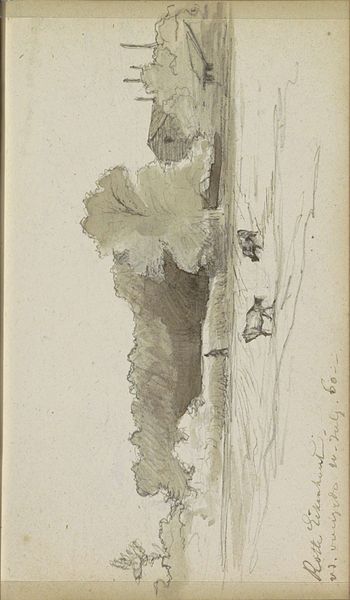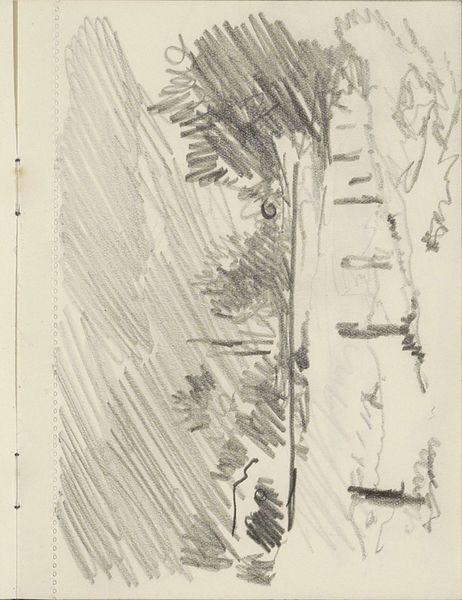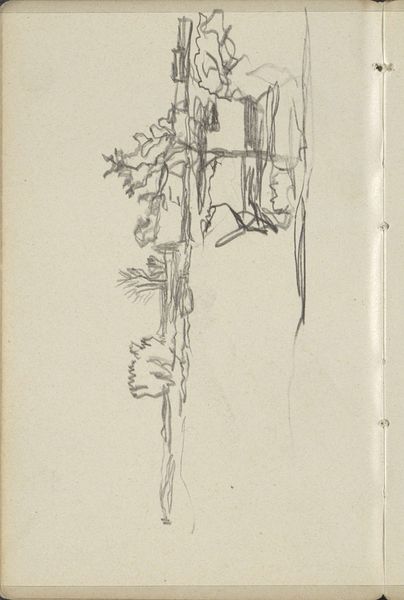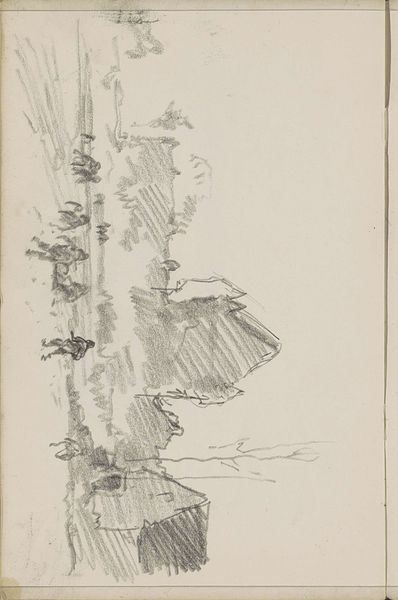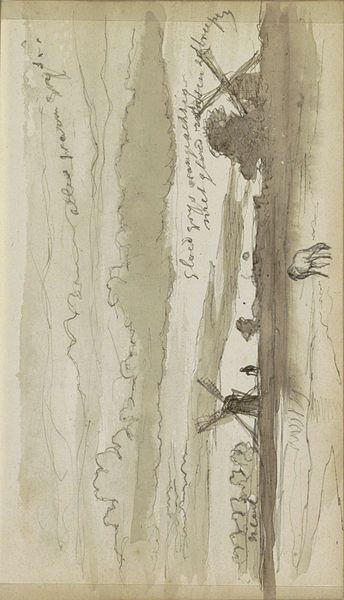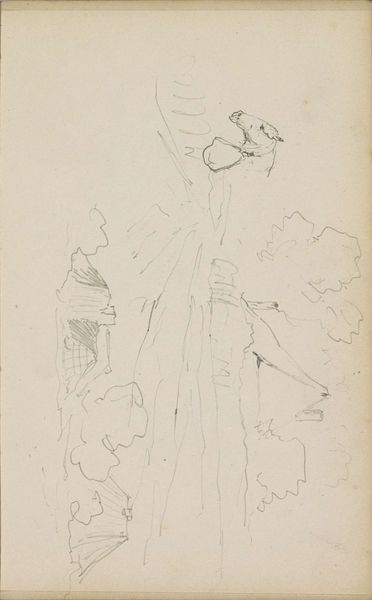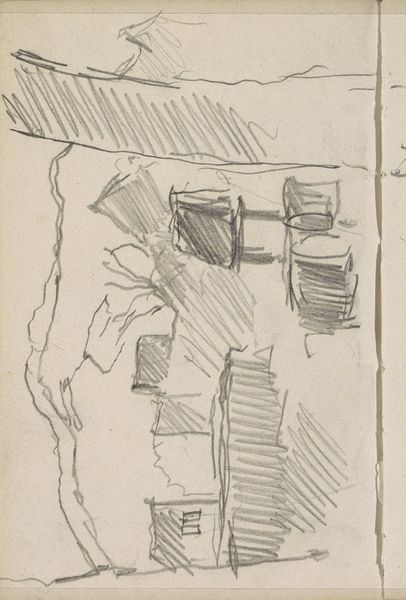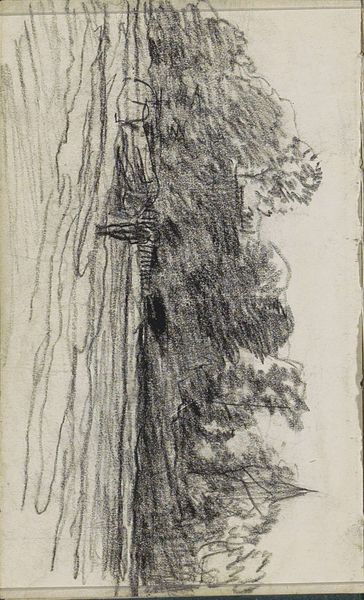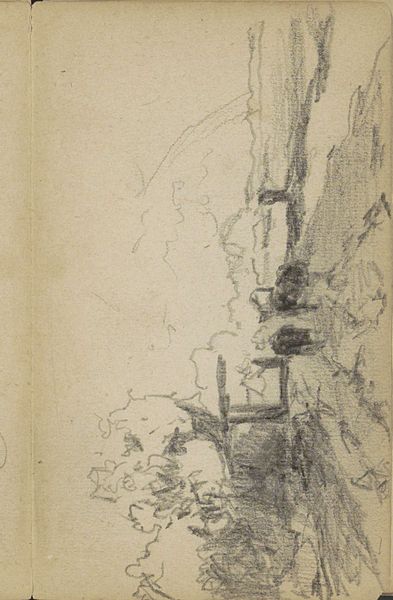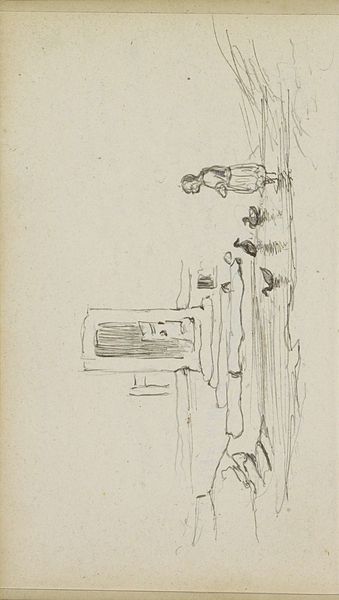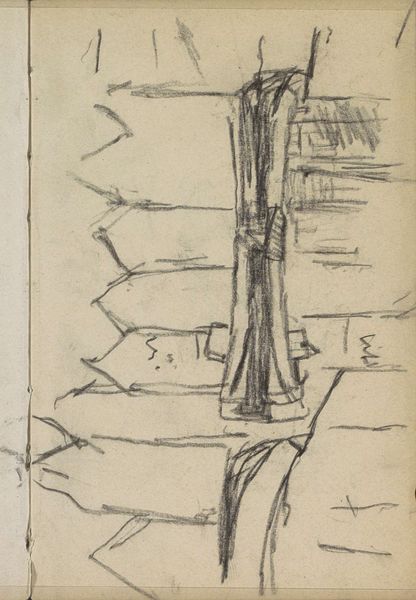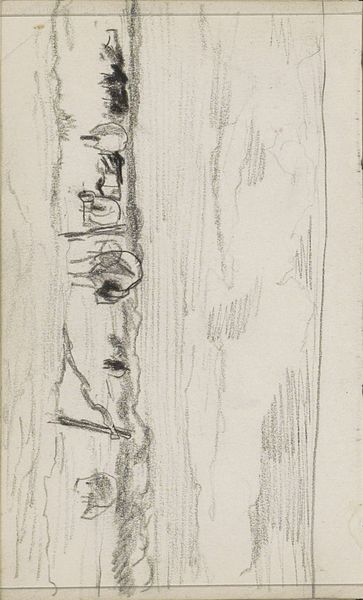
Copyright: Rijks Museum: Open Domain
Curator: Here we have Johannes Tavenraat's "Weiland met koeien en een hooiwagen," created sometime between 1854 and 1868. It's a delicate rendering in ink and watercolor on paper. Editor: It feels almost dreamlike, doesn’t it? The washes of color create a soft focus. There's a hay wagon there, but everything else is hinted at rather than precisely defined. It has a very intimate, sketchbook feel. Curator: Precisely. Notice how Tavenraat uses the stark white of the paper itself to define shapes and light. The structural forms – the hay wagon, the implied figures of cows – are established primarily through a skillful articulation of line and shadow. Editor: There's a freedom to the way he applies the ink and watercolour. You can see the speed of his hand. It feels like a fleeting moment captured on the go. What strikes me is the immediacy of the sketch; the way the shapes are distilled to their essence. Curator: Observe the vertical orientation. The composition adheres to an intuitive, almost rudimentary structure where tonal values coalesce to give an atmospheric depth far exceeding the objective reality. See how the artist contrasts the heavier foreground elements with the ethereal trees at the top. Editor: That's it. It's like glimpsing a world through a veil. There is a hazy and romantic quality here that I cannot ignore. Makes me wanna sit down on the hill side on an early dewy morning to just pause and contemplate nature as it unfurls before us. Curator: Tavenraat embraces a kind of subdued Romanticism characteristic of much Dutch landscape art of this period, which prioritizes faithful representations of the national countryside while remaining cognizant of broader European aesthetic movements. Editor: More like a felt representation, perhaps? The imperfection is, for me, its strongest asset. In that imperfect view there resides an intimate rendering of life, of a precise lived reality, more than any attempt to document reality "faithfully". Curator: Ultimately, Tavenraat is not simply illustrating a scene, he’s engaging with the traditions of landscape representation while forging a pathway all his own. Editor: This glimpse has stayed with me in surprising ways—it now colors how I might walk through a meadow or pause near a hay field; that's how artwork embeds itself into how one sees the world, if it is moving enough!
Comments
No comments
Be the first to comment and join the conversation on the ultimate creative platform.
